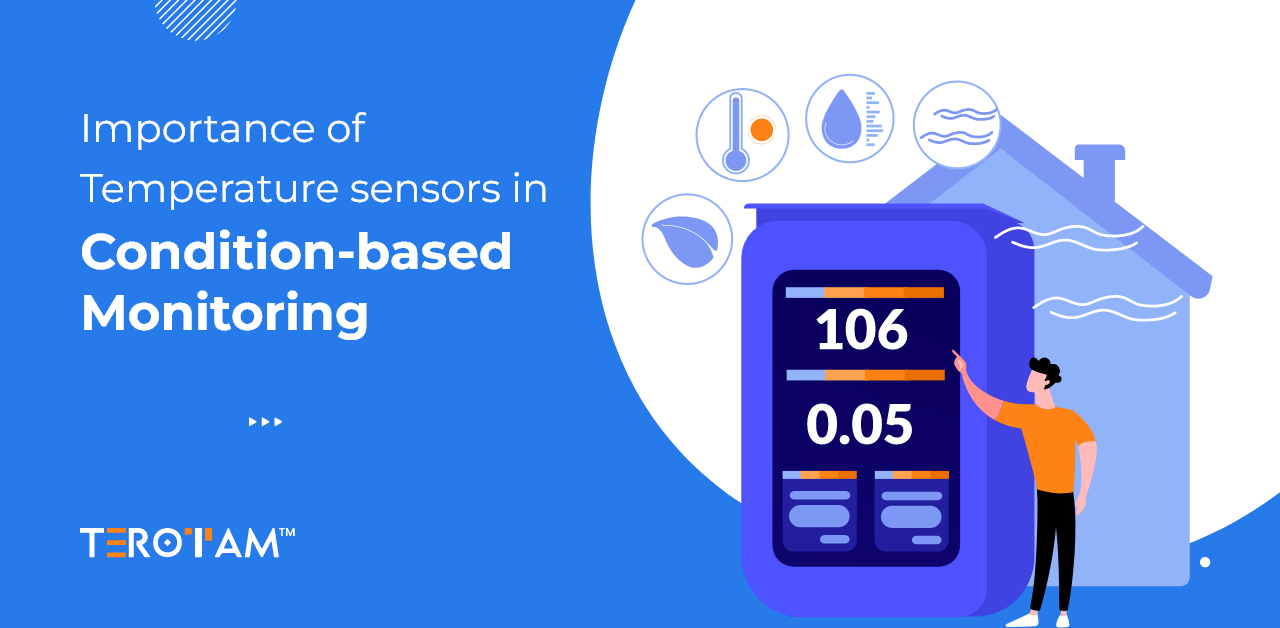Condition-based monitoring (CBM) has reshaped how industries approach maintenance. Instead of sticking to rigid schedules or reacting to breakdowns, CBM focuses on real-time equipment health. At the heart of this approach are sensors that gather data from machines—especially temperature sensors, which often act as the first line of detection when something starts to go wrong.
Temperature fluctuations are often the earliest indicators of wear, overload, misalignment, or internal friction. Whether it’s motors, pumps, bearings, or transformers, even a few degrees of unexpected heat can signal a developing issue. That’s why temperature sensors aren’t just helpful in CBM—they’re fundamental to its effectiveness.
This article explores how temperature sensors support condition-based monitoring, what makes them essential, and how they fit into predictive maintenance strategies for modern industries.
How Temperature Sensors Fit into Condition-Based Monitoring
Condition-based monitoring works by collecting live data from machines and comparing it against predefined normal ranges. Among the various parameters that can be tracked—like vibration, pressure, or oil quality—temperature offers some of the most direct insights into internal equipment conditions.
When temperature sensors are integrated into a CBM system, they:
- Continuously track thermal changes in components such as bearings, coils, or compressors.
- Alert teams when temperatures deviate from safe operating zones.
- Provide baseline readings to support long-term equipment health analysis.
Because heat is often a symptom of hidden stress—be it electrical overload, friction from wear, or airflow issues—temperature data helps maintenance teams catch early-stage faults without needing to dismantle the equipment.
Where Temperature Sensors Make the Biggest Difference in Predictive Maintenance
In large-scale operations, the smallest inefficiencies can trigger a chain of failures. When systems run continuously, even a slight temperature rise—often unnoticed without sensors—can quietly degrade performance or signal hidden mechanical strain. Catching those early thermal shifts is one of the smartest ways to get ahead of potential failures.
But not every asset on the shop floor needs the same level of monitoring. Certain machines and components are more vulnerable to heat-driven wear and need closer thermal attention. These are the high-risk zones where temperature sensors often prove their worth the most.
- Electric motors and drives: Internal heat build-up can point to insulation damage or winding faults.
- Bearings and rotating parts: Increased temperature may signal lubrication failure or bearing wear.
- Hydraulic systems: A temperature rise in hydraulic fluid can suggest pump inefficiencies or blockages.
- Power transformers: Excess heat often means overloading or cooling system problems.
- HVAC systems: Fluctuating coil or compressor temperatures can identify refrigerant leaks or airflow blockages.
Key Features to Look for in Industrial-Grade Temperature Sensors
Choosing the right temperature sensor for CBM is as important as the monitoring strategy itself. In industrial environments, sensors must be both accurate and rugged enough to handle tough conditions.
Key characteristics to consider include:
- High sensitivity and fast response: Allows real-time tracking of small fluctuations.
- Wide operating temperature range: Essential for environments that experience extreme highs or lows.
- Robust enclosures: Withstands exposure to dust, moisture, chemicals, or vibrations.
- Integration-ready: Compatible with common CBM platforms or industrial control systems (SCADA, PLCs, etc.).
- Wireless capability: Ideal for remote or hard-to-reach machinery.
Depending on the application, sensors might use thermocouples, RTDs, or infrared technology—each with its strengths based on precision needs and installation constraints.
Why Combining Temperature Sensors with a CMMS Makes CBM More Effective
When temperature sensors are integrated with a Computerized Maintenance Management System (CMMS), condition-based monitoring becomes more than just real-time tracking—it becomes a system that learns, adapts, and supports smarter maintenance decisions over time. Instead of manually checking sensor readings or logging data in silos, everything flows into a central platform where trends, tasks, and triggers are managed with clarity.
This combination doesn’t just simplify data handling—it transforms how maintenance teams respond to early warning signs. It enables faster decision-making, better resource planning, and long-term reliability improvements across assets.
- Automated alerts and work orders
When the temperature crosses set limits, the CMMS can automatically generate and assign a work order without human intervention. - Consolidated equipment history
Every temperature spike and the corresponding action taken is logged—helpful for audits, troubleshooting, and long-term maintenance strategy. - Trend analysis for forecasting
With continuous data flowing into the CMMS, teams can spot gradual increases in operating temperatures that point to developing faults. - Priority-based scheduling
Assets showing signs of overheating can be flagged as higher priority, helping teams focus their attention where it’s needed most. - Reduction in unnecessary inspections
Instead of checking all machines equally, the CMMS guides technicians to only inspect those showing heat-related warning signs. - Cross-team collaboration and accountability
Maintenance, operations, and reliability teams can all access the same temperature data, ensuring aligned actions and clear responsibilities. - Mobile access to thermal data
With mobile-enabled CMMS platforms, technicians can receive temperature alerts and take immediate action even when they’re not on the shop floor. - Integration with other sensor data
The CMMS can combine temperature readings with data from vibration, pressure, or fluid sensors to provide a complete picture of asset health. - Custom thresholds and escalation workflows
Set tailored temperature thresholds for different equipment and build workflows that escalate issues if not resolved within a time frame. - Improved spare part planning
Predictable patterns from temperature trends help estimate part wear, allowing for timely procurement and reduced emergency orders.

Conclusion
Temperature sensors do more than measure heat—they provide actionable insights that prevent breakdowns, reduce maintenance costs, and improve operational reliability. As part of a condition-based monitoring approach, they help maintenance teams shift from reactive fixes to well-timed interventions based on real data. If you’re exploring ways to add intelligence to your maintenance setup, consider temperature sensing as a first step.
If you’d like help integrating these tools into a full CMMS framework, reach out to contact@terotam.com to see how TeroTAM can support your predictive maintenance goals.








